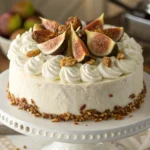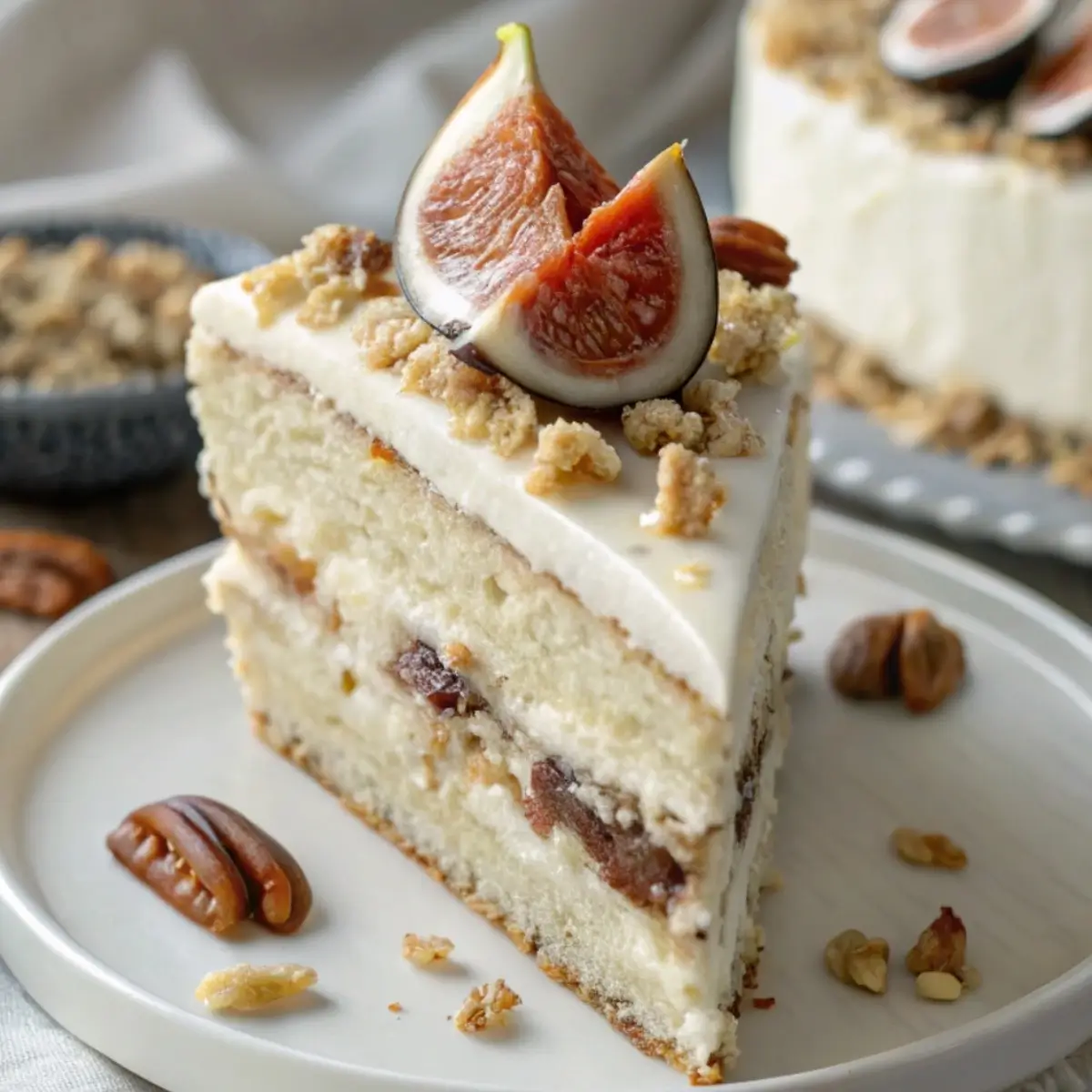The Lady Baltimore cake isn’t just a dessert it’s a slice of Southern elegance with a story rich in charm and tradition. If you’ve ever wondered what made this genteel layer cake so iconic, you’re in for a real treat. In this article, we’re diving into the original Lady Baltimore cake recipe, exploring where it came from, what makes it taste so special, and how it compares to its lesser-known cousin the Lord Baltimore. Whether you’re a nostalgic baker or a curious dessert lover, this piece has everything you need to know to bring this timeless cake to life in your kitchen. Plus, we’ll answer all your top questions and link you to other delicious cakes and treats you’ll want to try next.
A Sweet Legacy of the South
The cake that stole hearts in Charleston
The first time I tasted a Lady Baltimore cake, it wasn’t at a fancy tea party or elegant luncheon it was in my grandmother’s sunlit kitchen in Savannah. I still remember how she smiled as she beat egg whites into snowy peaks, carefully folded in chopped figs and pecans, and layered each tier with pride. That cake wasn’t just dessert; it was storytelling. And the original Lady Baltimore cake recipe is full of exactly that elegance, history, and a hint of mystery.
The name alone makes it feel regal, doesn’t it? But this cake has humble beginnings rooted in the South, specifically Charleston, South Carolina. Legend has it that the recipe first appeared in a 1906 novel by Owen Wister, where it was described as so divine that it left gentlemen swooning. Inspired readers asked for the recipe, and the rest is delicious history.
With its fluffy white layers, dreamy meringue-like frosting, and fruit-and-nut filling, the Lady Baltimore cake quickly became a symbol of Southern hospitality. It’s been served at weddings, holidays, and Sunday dinners for over a century. And for good reason it’s a cake that feels like home.
You can still find this classic flavor in modern versions, but there’s something magical about making it the old-fashioned way. Just like this easy Keebler cheesecake recipe or the elegant strawberry tres leches cake, the Lady Baltimore cake is proof that vintage desserts never go out of style.
A recipe wrapped in flavor and tradition
The original Lady Baltimore cake recipe isn’t just known for its taste it’s also celebrated for its unique texture and rich filling. The base is usually a white or sponge cake, made tender by the use of egg whites and buttermilk. But the star? The fruit-and-nut filling.
Inside the layers, you’ll typically find chopped figs, raisins, and walnuts or pecans, all folded into a light frosting made from Italian or boiled meringue. This filling adds texture and contrast soft and sweet with just enough crunch to make each bite unforgettable.
The frosting, similar to a fluffy marshmallow cloud, coats the cake in a delicate, glossy finish. And while some folks frost only the top and sides, others use a bit more filling between layers to pack in even more flavor.
Curious how it compares to other nostalgic sweets? The Lady Baltimore cake has a cousin the Heaven on Earth cake that’s layered and light, too, though made with pudding and cake cubes instead of fruit and meringue.
Want to try a twist on tradition? Some bakers add dried cherries or a splash of rum to the filling. Just like our churro cheesecake gives a fun twist on the classic, the Lady Baltimore cake can be both historic and flexible.
And if you’re the type to go all-in on classic cakes, you’ll love the soft texture of this gluten-free strawberry cake a modern bake with that same tender crumb.
Print
Original Lady Baltimore Cake Recipe – A Timeless Southern Delight
- Total Time: 1 hour
- Yield: 1 cake (10–12 servings) 1x
- Diet: Vegetarian
Description
A light, elegant white cake layered with fruit-and-nut meringue filling and finished with fluffy frosting.
Ingredients
2 ½ cups cake flour
1 tbsp baking powder
½ tsp salt
¾ cup unsalted butter, room temperature
1 ¾ cups granulated sugar
1 cup buttermilk
6 egg whites
1 tsp vanilla extract
1 cup chopped dried figs
½ cup raisins
¾ cup chopped pecans
3 egg whites (for frosting)
1 cup sugar
¼ cup water
Instructions
1. Preheat oven to 350°F (175°C). Grease and flour two 9-inch round cake pans.
2. Sift flour, baking powder, and salt together. Set aside.
3. Cream butter and sugar until fluffy. Add vanilla.
4. Alternate adding flour mixture and buttermilk to the butter mixture.
5. In a separate bowl, beat 6 egg whites until stiff. Fold into batter gently.
6. Divide batter into pans and bake for 25–30 minutes. Cool completely.
7. For the filling, combine figs, raisins, pecans, and a few spoonfuls of frosting.
8. Make boiled frosting: beat 3 egg whites while slowly pouring in boiled sugar syrup (made with 1 cup sugar + ¼ cup water).
9. Layer cake with filling and frost the entire cake with the meringue.
10. Chill briefly before serving.
Notes
Store in a cake dome at room temperature for up to 2 days.
You can swap figs with chopped dates if preferred.
Boiled icing should be used immediately after making.
- Prep Time: 25 minutes
- Cook Time: 30 minutes
- Category: Dessert
- Method: Baking
- Cuisine: Southern American
Nutrition
- Serving Size: 1 slice
- Calories: 430
- Sugar: 42g
- Sodium: 180mg
- Fat: 18g
- Saturated Fat: 8g
- Unsaturated Fat: 9g
- Trans Fat: 0g
- Carbohydrates: 60g
- Fiber: 2g
- Protein: 5g
- Cholesterol: 40mg
Keywords: original Lady Baltimore cake recipe, Southern cake, vintage cake, Lady Baltimore cake, traditional Lady Baltimore cake, classic Southern cake, vintage layer cake, old-fashioned Baltimore cake, Southern dessert cake, fig and nut cake, meringue-frosted cake, historical cake recipe
Crafting the Original Lady Baltimore Cake
Gathering traditional ingredients the Southern way
To bring the original Lady Baltimore cake recipe to life, it all starts with simple pantry staples but with a Southern twist. You’ll need cake flour, baking powder, butter, sugar, and egg whites (no yolks here; the light crumb depends on the whites for lift). Buttermilk gives it that subtle tang and softness that makes every slice melt in your mouth.
For the signature filling, figs are essential. Dried figs offer a rich, almost honey-like flavor when chopped fine. You’ll also need chopped raisins and pecans or walnuts though my grandmother swore by pecans for that extra buttery crunch. Some versions use maraschino cherries, but that’s a personal flair, not part of the earliest recipe.
The frosting? Traditionally, it’s either a boiled icing or a glossy Italian meringue. You beat egg whites to stiff peaks, then slowly add hot sugar syrup. The result is a silky, snow-white cloud that tastes as elegant as it looks.
If you’re hunting for a modern shortcut without sacrificing nostalgia, check out this cake mix and soda recipe. It’s fast, fun, and a great way to ease into homemade baking before tackling something as detailed as Lady Baltimore.

Making and assembling the cake layers
This cake isn’t difficult, but it rewards attention to detail. Start by creaming the butter and sugar until fluffy, then slowly add in the sifted dry ingredients, alternating with buttermilk. Whip the egg whites separately and gently fold them in for that light, airy structure.
Bake the layers in round pans 8 or 9 inches works best then let them cool completely. The filling gets spooned between the layers, and then the whole cake is blanketed in that luscious meringue.
This step reminds me of frosting our loaf pan Basque cheesecake there’s something almost meditative about spreading soft clouds of sweetness across a homemade cake.
Lady vs. Lord – Cake Royalty Explained
What’s the difference between Lady Baltimore and Lord Baltimore cakes?
If you’ve come across the name “Lord Baltimore cake,” you’re not alone in wondering if it’s just a typo. But believe it or not, it’s a real cake with a fascinating backstory that contrasts beautifully with its “Lady” counterpart.
While the original Lady Baltimore cake recipe is a white or sponge cake made using only egg whites, the Lord Baltimore cake was created as a clever way to use the leftover yolks. That’s right it’s the golden, buttery sibling of the Lady, and just as elegant in flavor. Both cakes share similar fillings: dried fruits and chopped nuts folded into a fluffy frosting. But the Lord’s cake base is richer, often with a deeper vanilla or even almond undertone.
If Lady Baltimore is light and airy, Lord Baltimore is more robust and hearty. Think of it as a culinary yin-yang each cake completes the other, born from the same kitchen logic of waste-not-want-not.
This cake pair reminds me of how recipes like our pecan pie cheesecake balance texture and taste by combining creamy and crunchy layers in perfect harmony.
Why the Lady reigns in Southern tradition
Despite the flavorful richness of the Lord Baltimore cake, it’s the Lady who’s been crowned the favorite throughout Southern history. Maybe it’s the meringue’s ethereal look, or perhaps the way the light sponge plays off the chewy fig and nut filling. Whatever the reason, this cake has held its place at weddings, teas, and holiday tables for generations.
Its fame even stretches into modern kitchens where we love pairing traditional bakes with easy-to-serve options like these mini desserts to serve with cheesecake balls. They offer bite-sized elegance, much like a single forkful of Lady Baltimore.
FAQs About the Original Lady Baltimore Cake Recipe
What is the flavor of the Lady Baltimore cake?
The Lady Baltimore cake is subtly sweet with layers of nuanced texture. The white cake itself is soft and delicate, often flavored with vanilla and buttermilk, which adds a slight tang. The real depth comes from the filling a chewy blend of figs, raisins, and chopped pecans or walnuts, mixed into a fluffy meringue-style frosting. It’s sweet, nutty, and lightly fruity, balanced by the smooth marshmallow-like exterior.
It’s similar in texture contrast to the layers in this cherry cheesecake recipe, where fruit and cream meet in perfect balance.
Where did Lady Baltimore cake originate?
The cake originated in Charleston, South Carolina. Its rise to fame is largely credited to the 1906 novel Lady Baltimore by Owen Wister. In the story, a guest at a tea house is served this cake and becomes utterly enchanted prompting real readers to seek out the recipe. Local lore suggests the cake existed before the book and was made by a Charleston woman who served it at her bakery, but the novel helped secure its place in culinary history.
What is the cake for the coronation of Queen Elizabeth?
While not directly related to the Lady Baltimore cake, Queen Elizabeth’s coronation cake in 1953 was a rich fruitcake traditional in British royal ceremonies. It featured raisins, almonds, and spices, similar in spirit to Lady Baltimore’s filling, but much denser and more preserved for aging. The two cakes share historic elegance but differ greatly in texture and flavor.
Looking to explore more regal desserts? Try this blackberry cheesecake recipe it’s fresh, vibrant, and fit for a queen.
The original Lady Baltimore cake recipe is more than a dessert it’s a Southern treasure with a story in every bite. From its Charleston roots to its signature meringue frosting, this cake has stood the test of time, winning hearts with its blend of simplicity and sophistication. Whether you’re baking it for a family gathering or just to treat yourself to something special, it’s a recipe that carries history, grace, and good taste.

